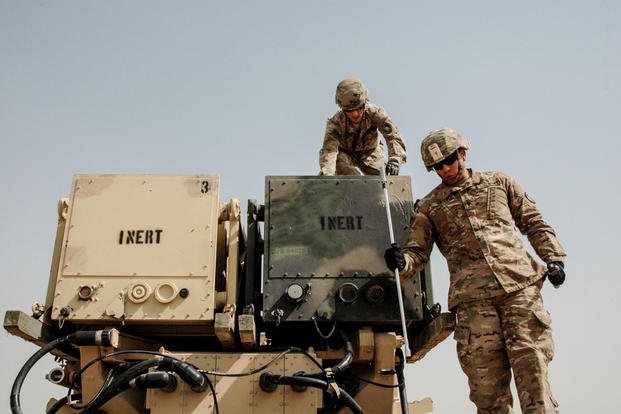The plan to move a Patriot anti-missile battery from Kuwait into Iraq to protect U.S. troops against another attack from Iran is on hold. It requires approval from the Baghdad government, which is in turmoil, the Pentagon said.
The U.S. has yet to receive assurances from Baghdad that the Patriot would be allowed into the country. "That conversation is still ongoing," Pentagon chief spokesman Jonathan Hoffman said at a briefing Monday.
The presence of an estimated 5,000 U.S. troops in Iraq and the movement of equipment are "at the invitation of the host nation," he said.
"We like to give our partners, and we like to give our friends, a heads-up on things that are coming and like to seek their permission," he added.
Related: Army May Send Missile-Defense Systems to Middle East to Counter Future Iran Strikes
Hoffman spoke ahead of an unannounced visit Tuesday to Iraq by Marine Gen. Frank McKenzie, head of U.S. Central Command, who met with the new leadership in Baghdad. He also was to tour Al Asad Air Base, where a recent Iranian airstrike took place, according to The Associated Press.
Al Asad was the main target of Iranian ballistic missile strikes on Jan. 8, in retaliation for a U.S. drone strike Jan. 3 at Baghdad International Airport that killed Iranian Quds Force leader Qasem Soleimani.
Initial reports following the Al Asad attack claimed there were no U.S. casualties, but at least 64 troops have since been diagnosed with traumatic brain injury and are eligible for Purple Hearts if the service branches approve.
The attack underlined that there are no Patriot or Terminal High Altitude Area Defense (THAAD) systems in place in Iraq that might have been able to intercept the incoming Iranian missiles.
However, Hoffman said, "The missile defense systems are not the only defensive asset we have."
He said the U.S. also relies on dispersal of forces, hardened bunkers and early warning systems, a possible reference to the Space Based Infrared System (SBIRS) of satellites for detecting missile launches worldwide.
In a White House address following the Al Asad attack, President Donald Trump praised "an early warning system that worked very well."
At a Pentagon news conference last Thursday, Defense Secretary Mark Esper said, "We need the permission of the Iraqis" to put the Patriot system into the country.
"That's one issue. There may be others with regard to the placement, things like that, more tactical, operational -- it's a combination of things," he said.
Joint Chiefs Chairman Gen. Mark Milley, who joined Esper at the news conference, said it is impossible to know whether the Patriots would have been effective against the Iranian missiles, but "that's what they're designed to do."
The U.S. effort to put a Patriot battery into Iraq comes amid months of deadlock in the Iraqi parliament on responding to waves of violent anti-corruption and anti-Iran street protests.
In December, Prime Minister Adil Abdul-Mahdi resigned but stayed on in a caretaker capacity as the parliament was unable to agree on a successor.
Following the strike that killed Soleimani, the parliament backed a resolution demanding the withdrawal of American troops, but the U.S. ignored the move and has since resumed operations against the Islamic State, according to Combined Joint Task Force-Operation Inherent Resolve.
Last Saturday, Iraqi President Barham Salih stepped in to break the gridlock in parliament and named Mohammed Tawfiq Allawi, a Shiite and a former communications minister, as the new prime minister.
-- Richard Sisk can be reached at Richard.Sisk@Military.com.
Read more: 2 Navy Jets Fly Like Drones in First-of-Its Kind Experiment














